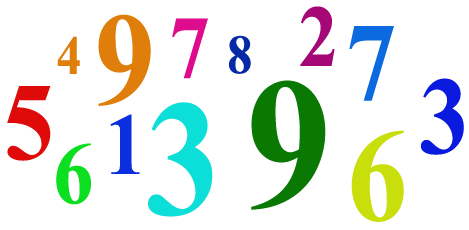Missing numbers and rules
0
Overview
Using this Resource
Connecting to the Curriculum
Marking Student Responses
Working with Students
Further Resources
This task is about identifying missing numbers and the rule for a growing number pattern.

For each set of numbers
- write the three missing numbers,
- write the rule for the number pattern.
Task administration:
This task can be completed with pen and paper or online (with SOME auto marking).
Level:
3
Curriculum info:
Keywords:
Description of task:
Students identify missing numbers and the rule for a growing number pattern.
Learning Progression Frameworks
This resource can provide evidence of learning associated with within the Mathematics Learning Progressions Frameworks.
Read more about the Learning Progressions Frameworks.Answers/responses:
| Y6 (10/2013) | ||
| a) |
9, 15, 21, 27, 33, 39 and explanation or rule [moderate]:
|
moderate moderate |
| b) |
35, 47, 59, 71, 83, 99 and
explanation or rule:
|
moderate
moderate
|
| c) |
136, 130, 124, 118, 112, 106, 100 and explanation or rule:
|
moderate moderate |
| d) |
84, 76, 68, 60, 52, 44, and explanation or rule:
Note: Question d) was more difficult because it involved recombining and compensating to subtract the 8 multiple times - this leaves more room for simple subtraction errors and may make it harder to recognise the pattern (and therefore the rule).
|
difficult
difficult
|
Diagnostic and formative information:
| Common error | Likely misconception | |
| a)-d) | 6,12,6,8 | Doesn't indicate whether the rule is involves adding or subtracting the number. |
|
a)
b)
|
examples:
12, 18, 24
59, 71 63, 75
68, 75, 83, 91*
|
Starts the pattern again/ignores the current pattern
Students work out the rule for the pattern but then apply the rule starting from a new starting point
*Error also involes taking the pattern in the wrong direction (adds instead of subtracts)
|
| a)-d) |
|
Addition/subtraction error (recombination)
There were a range of addition/subtraction errors made by students. These questions about patterns do require students to add/subtract a number of times.
|
Next steps:
For students who did not specific the whether the rule is involves adding or subtracting the number. In most cases this is simply an omission and can be recitifed by asking the student whether it the pattern involves adding or subtracting.
For students who made addition or subtraction error they could ensure that their basic facts are sufficiently developed to aid them work out problems like 76-8, 124-118, etc. Once students are confident with single operations they could explore adding and subtracting with multiple numbers, e,g., resources Adding sweets (L2) and Saving for a pet involve adding multiple numbers. In addition, students could explore applying a rule on a range of numbers: Machine rules (L2) and Number machines II (L3).
Students who "re-start" the pattern need to check back on their work and explain how the whole pattern goes and expaplin how the rule works for this whole pattern not just a bit of it. This understanding that the general rule should be consistent for the whole pattern is a key understanding in all exercises about patterns and rules.
Some students also wrote the re-wrote pattern instead of the rule. These students may need to explore creating their own simple patterns (with a rule) and using rules (Machine rules (L2)) to help them differentiate between the pattern and the rule, and before they can start to find the general rule in a pattern.
For more information about algebraic patterns, see the Algebraic Patterns Concept Map.

